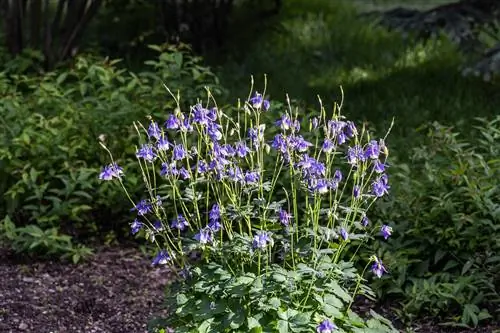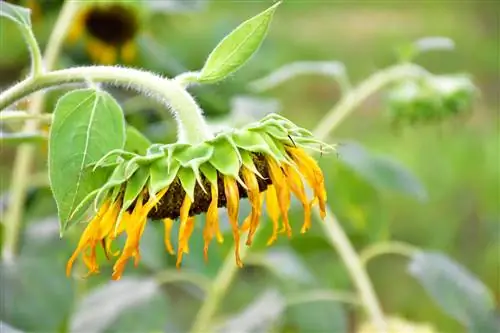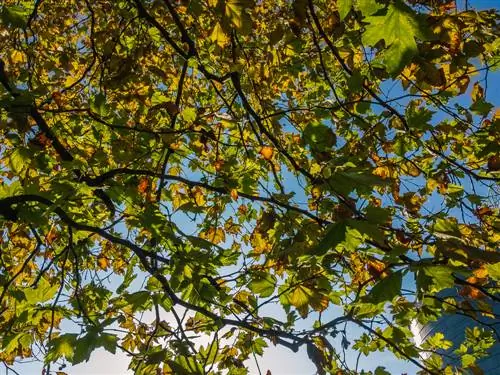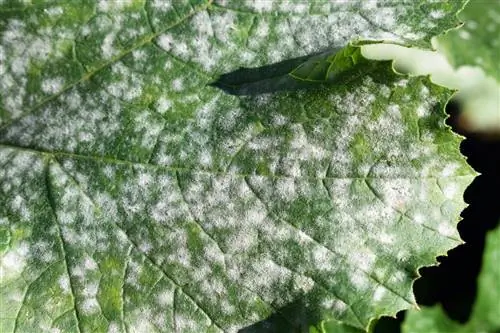- Author admin [email protected].
- Public 2023-12-16 16:46.
- Last modified 2025-01-23 11:22.
In general, columbines are robust and easy-care plants for the garden and balcony. It can happen that they are attacked by powdery mildew, but the pathogen usually does not cause any major damage and can be easily remedied. Recently, however, a new disease was discovered that can only be detected on columbines and can cause significantly greater damage: downy mildew.
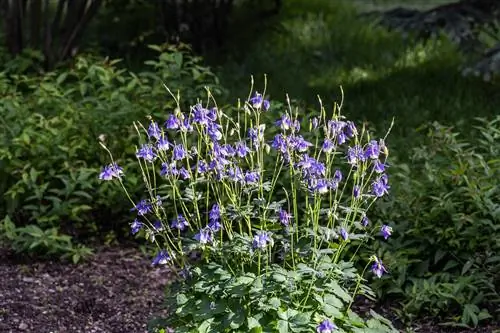
How dangerous is powdery mildew on columbines?
Aquilegias are repeatedly attacked by powdery mildew, which usually does not have a major impact on plant he alth. But downy mildew, which can harm columbines, has recently been spreading in Germany. Infected plants must be removed urgently.
Are columbines affected by powdery mildew?
Aquilegias are repeatedly attacked byMildew; warm and dry weather is usually responsible for this. Removing the affected leaves is not expected to cause any major damage to the plants. However, for the past two years there has been a new pathogen in Germany called “downy mildew”. After the fungus has already destroyed a large part of the columbine population in Great Britain, there are now fears of a similar development in the rest of Europe.
How do I recognize powdery mildew on a columbine?
Powdery mildew is usually shown by awhitish coating on the leaves of plants, including columbine. It occurs in dry and warm weather. Downy mildew, on the other hand, only appears on the undersides of the leaves. Yellow, later brownish spots can be seen on the upper side of the leaves. At the same time, an infestation causes the leaves to curl or the shoots to twist until the entire plant ultimately dies.
Since when has downy mildew existed?
Oomycete mushrooms have been knownfor a long time in East Asia. They were first discovered in Europe2013 in Great Britainand have spread rapidly there. The first case on mainland Europe was2020 in Germany. Now it's important to stop the pathogen from spreading further.
What causes downy mildew on columbines?
Downy mildew is caused by afungus called Peronospora aquilegiicola. It can attack columbines if they have wet leaves or wounds. Wet, cold, rainy weather creates optimal conditions for the fungus. The sporangia carriers growing out of the inside of the affected leaves lead to the typical sight, the whitish coating.
How can I treat downy mildew on columbines?
Columbines infected with downy mildew should beremoved completely as quickly as possible. As with powdery mildew, it is not enough to just cut off the affected leaves. At this point, the fungus has already spread throughout the plant. If it is not removed including the roots, the fungus can spread to other plants. Dispose of the plants in the residual waste; the fungus could survive in the compost, spread further and harm other plants in the long term. Clean and disinfect all tools, pots and other objects that could come into contact with the fungus. To be on the safe side, you should avoid planting new columbines in the next few years.
Tip
Preventing downy mildew on columbines
To protect your columbines from downy mildew, you should pay attention to a sunny and airy location. Do not plant the columbines too densely so that their leaves can dry quickly after rain. Protect your plants from moisture as much as possible. This also includes watering them from below so that the leaves and flowers stay dry.

